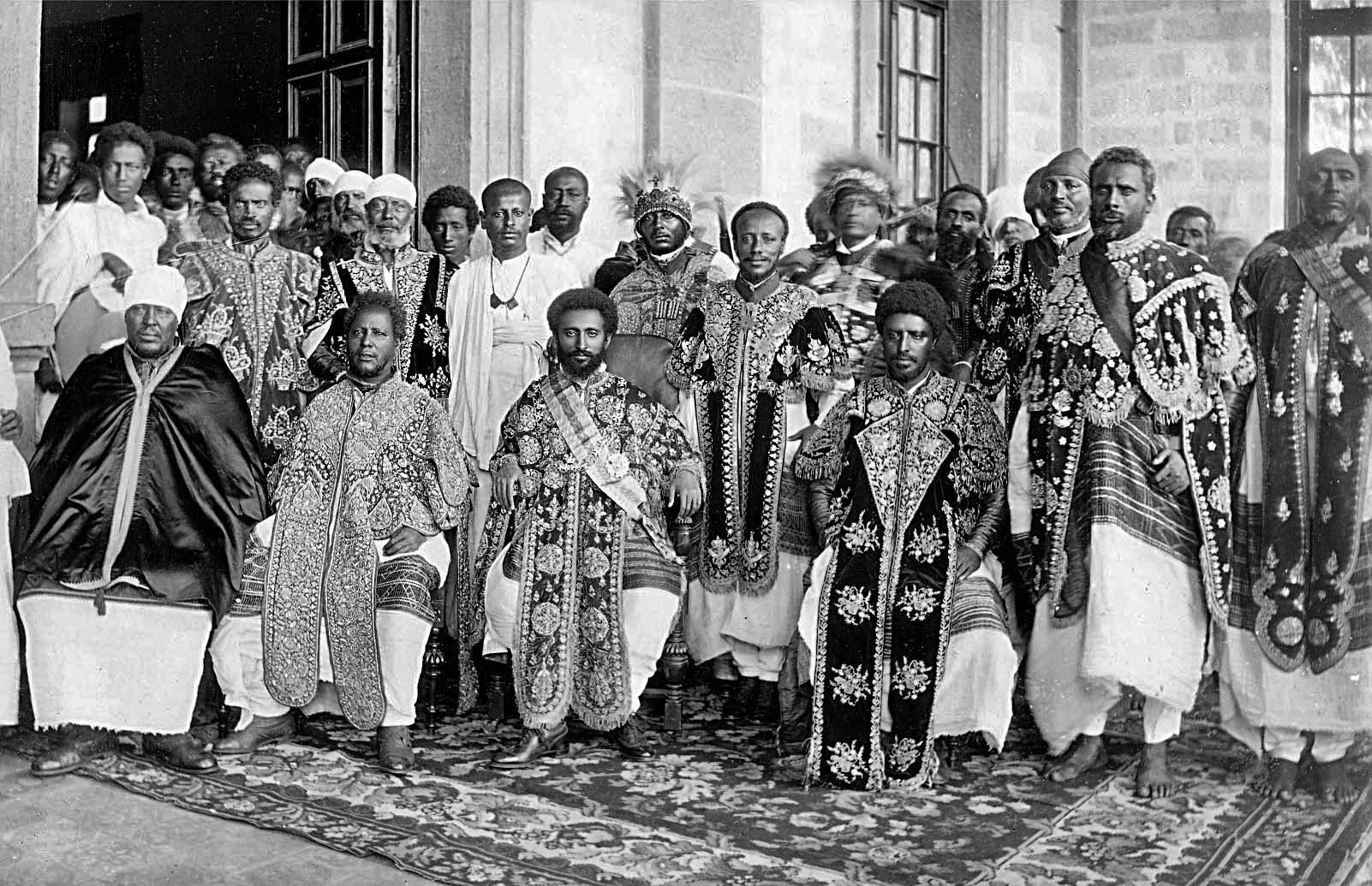|
Leul Sagad
Leul Sagad Atnaf Sagad (died 17 October 1916), also known by his horse name Abba Balay, was an Ethiopian courtier and army commander ( Ras) under Emperor Menelik II. A key figure in late 19th and early 20th century, he was responsible for several successful military campaigns, but was killed in battle during the struggle over Menelik's succession. Life Background Of Amhara nobility. Leul Sagad was a member of the influential Addisge family clan of Shewa. His father, Atnaf Sagad held the rank of Dejazmach. Leul Seged was closely connected to the Ethiopian court through his brother Wube Atnaf Sagad, who was the second husband of Menelik's daughter Zewditu. His cousin, Tessema Nadew was also an influential figure at Menelik's court and ''Enderase'' (regent) during Menelik's final illness.Prouty, C. ''Empress Taytu and Menilek II: Ethiopia, 1883-1910'', Red Sea Press, 1986, p.324 Military and court career Much of Lul Seged's activity was in the south of the country, particularl ... [...More Info...] [...Related Items...] OR: [Wikipedia] [Google] [Baidu] |
Horse Name
A horse name is a secondary nobility, noble title or a popular name for members of Ethiopian royal family, royalty; in some cases the "horse names" are the only name known for a ruler. They take the form of "father of X", where "X" is the name of the person's warhorse. Some known horse names of Ethiopian nobility include: Bibliography * Girma, Hewan. "Amharic Names, Naming Ceremonies and Memory." In ''Naming Africans: On the Epistemic Value of Names'', pp. 37-59. Cham, Switzerland: Springer International Publishing, 2023. * Mehari, Krista. 2007. Throne names, pen names, horse names, and field names: A look at the significance of name change in the Ethiopian political sphere* Pankhurst, Richard. 1989. The Early History of Ethiopian Horse-Names. ''Paideuma'' 35, pp. 197–206. * Mahatama-Sellasie Walda-Masqal. 1969. A Study of the Ethiopian Culture of Horse Names. ''Journal of Ethiopian Studies'' Vol. 7, No. 2, pp Notes References Culture of Ethiopia Equestrianism Horse ... [...More Info...] [...Related Items...] OR: [Wikipedia] [Google] [Baidu] |
Haile Selassie
Haile Selassie I (born Tafari Makonnen or ''Ethiopian aristocratic and court titles#Lij, Lij'' Tafari; 23 July 189227 August 1975) was Emperor of Ethiopia from 1930 to 1974. He rose to power as the Ethiopian aristocratic and court titles, Regent Plenipotentiary of Ethiopia (') under Empress Zewditu between 1916 and 1930. Widely considered to be a defining figure in modern History of Ethiopia#Modern, Ethiopian history, he is accorded divine importance in Rastafari, an Abrahamic religions, Abrahamic religion that emerged in the 1930s. A few years before he began his reign over the Ethiopian Empire, Selassie defeated Ethiopian army commander Gugsa Welle, Ras Gugsa Welle Bitul, nephew of Empress Taytu Betul, at the Battle of Anchem. He belonged to the Solomonic dynasty, founded by Emperor Yekuno Amlak in 1270. Selassie, seeking to modernise Ethiopia, introduced political and social reforms including the 1931 Constitution of Ethiopia, 1931 constitution and the Abolition of slavery i ... [...More Info...] [...Related Items...] OR: [Wikipedia] [Google] [Baidu] |
Ethiopian Military Personnel
Ethiopians are the native inhabitants of Ethiopia, as well as the global diaspora of Ethiopia. Ethiopians constitute several component ethnic groups, many of which are closely related to ethnic groups in neighboring Eritrea and other parts of the Horn of Africa. The first documented use of the name "Ethiopia" from Greek name , was in the 4th century during the reign of Aksumite king Ezana. There were three ethnolinguistic groups in the Kingdom of Aksum; Semitic, Cushitic, and Nilo-Saharan (ancestors of the modern-day Kunama and Nara). The Kingdom of Aksum remained a geopolitically influential entity until the decline of its capital — also named Axum — beginning in the 7th century. Nevertheless, the core Aksumite civilization was preserved and continued into the successive Zagwe dynasty. By this time, new ethnic groups emerged – the Tigrayans and Amharas. During the Solomonic period, the latter established major political and cultural influence in the Horn of Afr ... [...More Info...] [...Related Items...] OR: [Wikipedia] [Google] [Baidu] |
Ethiopian Nobility
Until the end of the Ethiopian Empire, Ethiopian monarchy in 1974, there were two categories of nobility in Ethiopia and Eritrea. The Mesafint ( , modern transcription , singular መስፍን , modern , "prince"), the hereditary royal nobility, formed the upper echelon of the ruling class. The Mekwanint ( , modern , singular መኰንን , modern or , "officer") were the appointed nobles, often of humble birth, who formed the bulk of the aristocracy. Until the 20th century, the most powerful people at court were generally members of the ''Mekwanint'' appointed by the monarch, while regionally, the ''Mesafint'' enjoyed greater influence and power. Emperor Haile Selassie greatly curtailed the power of the ''Mesafint'' to the benefit of the ''Mekwanint'', who by then were essentially coterminous with the Ethiopian government. The ''Mekwanint'' were officials who had been granted specific offices in the Abyssinian government or court. Higher ranks from the title of ''Ras'' descendi ... [...More Info...] [...Related Items...] OR: [Wikipedia] [Google] [Baidu] |

